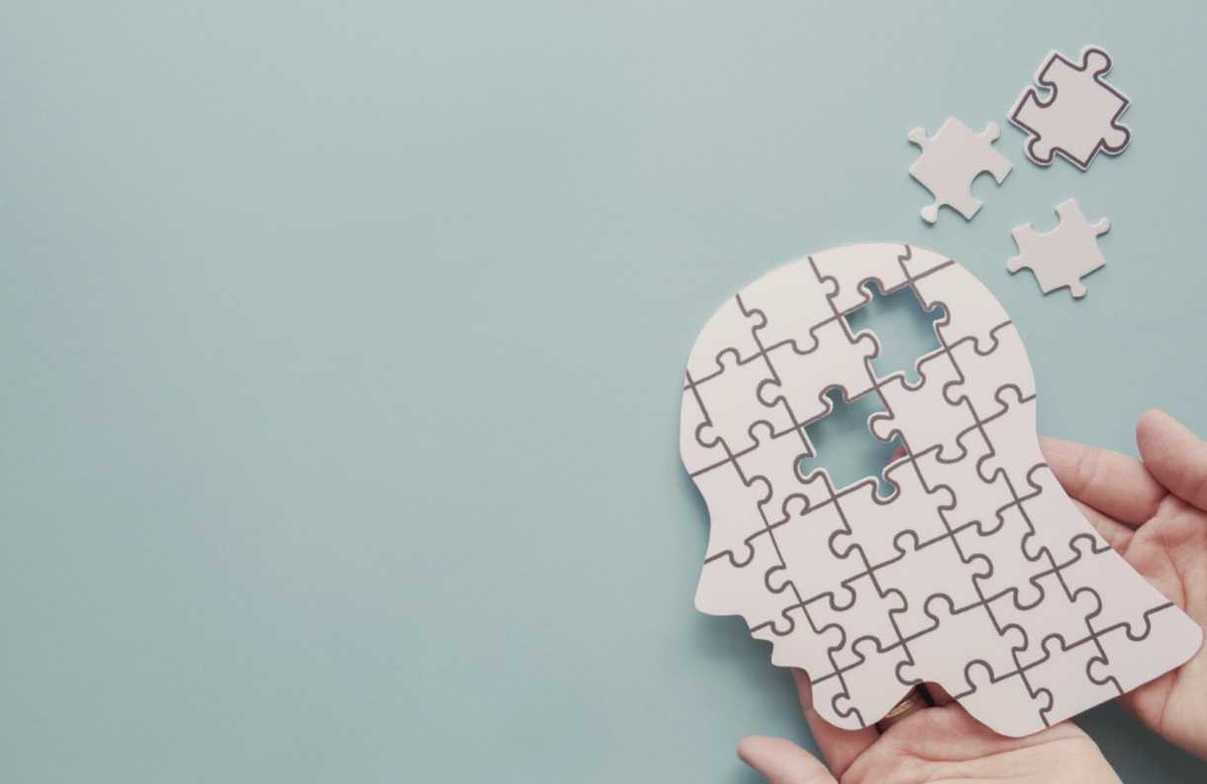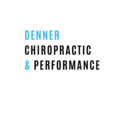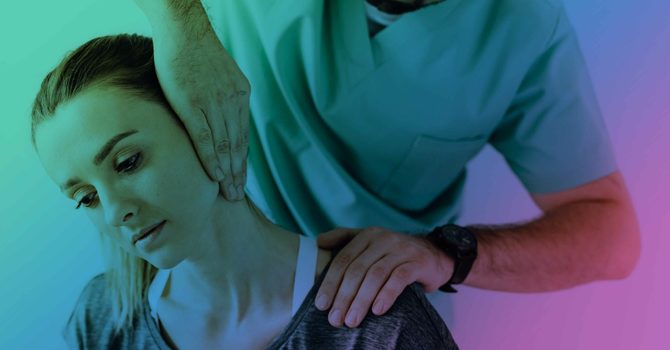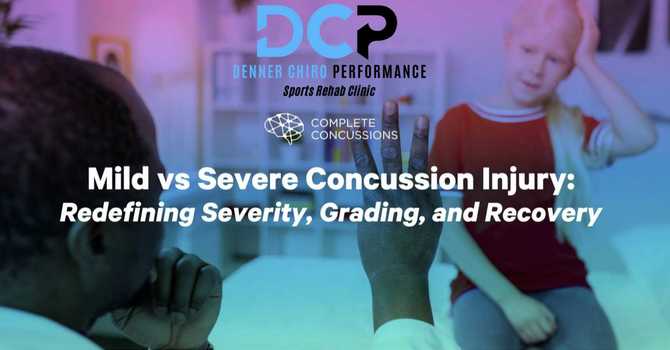
Unraveling Post-Concussion Syndrome: Understanding Causes and Empowering Recovery
Concussion injuries are generally well-managed with appropriate treatment, most patients can anticipate a gradual decline in symptoms within 7-10 days. However, it's important to acknowledge that approximately 30-40% of individuals who experience a concussion may encounter a different trajectory.
The latest research indicates that approximately 30-40% of individuals who have sustained a mild traumatic brain injury will continue to experience symptoms beyond the normal metabolic healing time (1,2,3,4). This lingering impact is commonly referred to as Post-Concussion Syndrome. The variety of symptoms arising from a concussion can vary significantly and have a profound effect on one's daily life, often making even routine tasks challenging to perform.
It is not uncommon for patients to feel concerned and frustrated when faced with prolonged symptoms after a head injury and the unpredictable nature of their recovery process.
Lingering questions often arise:
- Do my symptoms mean there is still damage from my brain injury?
- Are my symptoms permanent?
- What is causing my symptoms to persist?
- Am I delaying my recovery by provoking my symptoms?
- Will this head injury affect my brain function?
In this article, we will discuss the meaning of the diagnosis “Post-Concussion Syndrome”, discuss the five most common causes of Post-Concussion Syndrome and give you valuable tools to guide patients toward a successful recovery journey.
What is Post-Concussion Syndrome?
The Berlin Consensus Statement (5) characterizes post-concussion syndrome (PCS) as the persistence of symptoms beyond 14 days in adults and up to a month in children. The ICD-10 further defines PCS as the presence of three or more symptoms persisting for over four weeks post-injury.
According to research conducted by Vagnozzi et al in 2010, typical metabolic recovery post-injury is usually achieved between 22 to 30 days. At this stage, our energy levels rebound to their normal state, signaling a full physiological recovery. Yet, this presents us with a perplexing question: why do symptoms persist in patients even after their physiological recovery is complete?
Post-Concussion Syndrome: A Functional Injury
The critical aspect to grasp here is that PCS is defined more by enduring symptoms than by physical, structural damage. Concussion injuries are fundamentally functional, which means they do not present visible evidence on CT scans, MRIs, X-rays, or other forms of advanced imaging.
Once your body has transitioned past the initial healing phase and achieved metabolic recovery, the ongoing post-concussion symptoms are generally linked to functional irregularities rather than structural damage. In other words, it's not about damaged cells or visible scars, but rather how your body functions. When it comes to post-concussion syndrome, it's important to note that even if symptoms worsen with activities, there is no need to immediately raise alarm. It's crucial to understand that symptoms alone provide a poor indication of one's overall metabolic health.
With this foundational understanding, let’s discuss the most common functional disturbances that patients with PCS encounter. Additionally, we'll spotlight the crucial part that trained healthcare professionals can play in mitigating these challenges.
The 5 Most Common Causes of Post-Concussion Syndrome
Persistent symptoms are typically linked to functional processes that have been disrupted due to a suspected concussion injury. Pinpointing the exact role of each mechanism can be difficult without proper testing of their involvement. Listed below are the leading causes of post-concussion syndrome. We are going to discuss each mechanism and ideas for treatment approaches.
1. Blood Flow Dysregulation
2. Metabolic/ Inflammatory/ Hormonal
3. Cervical Spine Dysfunction
4. Visual/ Vestibular
5. Psychological
When dealing with patients with post-concussion syndrome, it's key to understand that they may display traits from several of the above categories. Even though one category may seem more prominent, it's crucial to acknowledge the contribution of all five factors to their condition. Even if some mechanisms appear more dominant, we must adopt a comprehensive approach to care as healthcare providers. This involves harnessing all available resources to ensure the best possible support for our patients.
Blood Flow Dysregulation
One of the primary factors contributing to the development of Post-Concussion Syndrome (PCS) involves an imbalance in cerebral blood flow. When a traumatic brain injury occurs, there is a notable decline in the flow of blood to the brain, as studies on animal models have demonstrated reductions of up to 50% (7).
This disruption in blood flow stems from a disturbance in the autonomic nervous system, which plays a pivotal role in regulating heart rate variability, neurovascular coupling, and cerebrovascular reactivity. These three mechanisms work in harmony to control the efficient supply of blood to the brain.
However, when this delicate balance is disrupted, individuals may experience an aggravation of symptoms during physical activities or demanding tasks. In severe cases, this phenomenon is referred to as dysautonomia.
Dysautonomia
Dysautonomia can manifest in various ways, with symptoms that include anxiety, blurry or double vision, brain fog, dizziness, lightheadedness, syncope (fainting), exercise intolerance, insomnia, and tunnel vision.
Treatment for Blood Flow Dysregulation
The fascinating aspect is that the treatment for this blood flow dysregulation is relatively simple, perhaps contrary to what one might expect. Current evidence has revealed that sub-symptom threshold exercise proves to be the most effective intervention for alleviating this dysregulation 8,9,10. Sub-symptom threshold exercise is determined through a specialized assessment called the "Buffalo Treadmill Test." During this test, patients engage in a straightforward walking exercise that allows clinicians to ascertain their maximum heart rate without triggering or exacerbating their symptoms to a significant degree.
By carefully monitoring and prescribing exercise that remains below symptom threshold, healthcare professionals can optimize blood flow regulation.
Metabolic, Inflammatory, and Hormonal
When it comes to concussions, inflammation is a natural and anticipated part of the healing process. It plays a crucial role in initiating the repair mechanisms within the brain. However, complications arise when inflammation becomes chronic and uncontrolled, hindering the recovery process. This is where the Gut-Brain-Axis comes into the picture as a key contributor to systemic inflammation following a traumatic brain injury (11).
The Gut-Brain Axis
Research has shed light on the fact that a concussion can lead to heightened levels of intestinal permeability, also known as "leaky gut." Essentially, the delicate lining of the intestines becomes compromised, allowing undesirable particles to enter the bloodstream. These particles can trigger an autoimmune response, exacerbating inflammation throughout the body. The gut-brain axis has also been shown to contribute to brain function, memory, mood and anxiety.
Hormonal Dysregulation
Interestingly, while hormonal dysregulation is rare following a concussion, it can occur in some cases. The good news is that the same treatment approach used to address inflammation can also be effective in addressing hormone imbalances. An anti-inflammatory diet, coupled with appropriate lifestyle modifications, can have a significant impact on reducing gut permeability, and lowering inflammation and restoring hormone balance.
Anti-inflammatory Diet
By adopting an anti-inflammatory diet, individuals can focus on consuming foods that possess powerful anti-inflammatory properties. These include nutrient-rich fruits and vegetables, omega-3 fatty acids found in fatty fish, healthy fats like avocados and olive oil, as well as pre and probiotic foods to further help the gut microbiome. Additionally, incorporating stress management techniques, regular exercise, and adequate sleep can contribute to the overall reduction of inflammation and support hormone balance.
The beauty of this approach lies in its holistic nature, as it targets multiple aspects of healing and recovery. By nourishing the body with anti-inflammatory foods and making lifestyle adjustments, individuals can create an environment that supports optimal gut health and minimizes chronic inflammation. This, in turn, can have a positive impact on the healing of a brain injury and contribute to a more effective and well-rounded recovery process without the use of nonsteroidal anti-inflammatory drugs.
Cervical Spine Dysfunction
It's a common misconception that any impact to the head or body automatically results in a concussion. In reality, a specific amount of force is required to produce this type of injury. This force is measured in gravitational force (G-Force), and research indicates that a range of 70-120 Gs (12) is necessary to sustain a concussion.
When do whiplash injuries occur?
Most whiplash injuries, also known as cervical spine sprain/strain, occur with significantly lower levels of force, typically around 4.5 Gs (13). This stark contrast in force requirements underscores the significance of considering the cervical spine in the management of post-concussion syndrome (PCS). It's important to recognize that every concussion injury has a component of cervical spine involvement.
Assessment of the Cervical Spine
When conducting a physical exam on the cervical spine in individuals with PCS, certain dysfunctions are commonly observed. These include joint restrictions and trigger point referral patterns. Joint restrictions occur due to immobility and can result in tension, stiffness, and neck pain. On the other hand, trigger points are a normal physiological response that develops as a protective mechanism, particularly in muscles lacking stability. Interestingly, both joint restrictions and trigger points in the cervical spine have been found to contribute to various symptoms, including headaches, visual disturbances, dizziness, and more.
Treatment of the Cervical Spine
Manual therapy plays an important role in the treatment of concussion symptoms. In the case of joint dysfunction, joint manipulation proves to be a highly effective and potent approach for addressing such issues. After a mild traumatic brain injury, the joints in the cervical spine often experience stiffness and impaired mechanics, leading to a reduction in range of motion, along with symptoms like headaches and neck pain.
Proper joint mechanics also play a vital role in visual symptoms, this is due to the fact that joints contain receptors that provide information to the brain about our spatial orientation. When this mechanism is compromised, it can cause a myriad of symptoms. Healthcare providers trained in joint manipulation from an evidence-based approach can restore proper joint mechanics leading to a faster recovery.
As mentioned earlier, the presence of trigger points in the muscles surrounding the cervical spine can give rise to pain in other areas of the body. This phenomenon, known as referred pain, is a well-established concept in the field of manual therapy. Just like a heart attack can cause arm pain, patients often associate headaches solely with brain function, but this is not always accurate. Pioneers in this field, such as Travell and Simons, extensively documented numerous referral patterns throughout the body. Fortunately, rehabilitation exercises offer a viable long-term solution for relieving pain caused by these trigger points.
Understanding the interplay between head injuries and cervical spine injuries is crucial for the comprehensive management and effective treatment of PCS and whiplash injuries. By addressing cervical spine dysfunctions, healthcare providers can potentially alleviate symptoms, improve mobility, and enhance overall recovery.
Visual and Vestibular Dysfunction
When we think about how we perceive the world around us, our visual and auditory systems take center stage. These systems play a vital role in our spatial awareness, balance, and overall perception. It is no surprise, then, that individuals with Post-Concussion Syndrome (PCS) often experience a myriad of symptoms related to the visual and vestibular systems.
Among the most frequently reported symptoms associated with PCS, a significant number are attributed to visual and vestibular dysfunctions. These symptoms can manifest in various ways, affecting an individual's daily life and overall well-being.
Some of the most common symptoms reported include,
- Dizziness
- Balance problems
- Car sickness
- Light sensitivity
- Blurry vision (with/without movement)
- Double vision
- Peripheral vision problems
- Headaches
- Depth perception issues
- Reading issues (e.g. losing place, re-reading, word movement/blur)
- Intolerance to computer screens (brightness, scrolling)
Visual Assessment
Initiating a Visual Oculomotor Screen (VOMS) can be an excellent first step in your diagnostic process when examining visual symptoms. Conducting a VOMS assessment empowers clinicians to pinpoint the specific disturbances of the visual system that might be significantly impacting a patient's condition. Moreover, these insights can guide you in selecting the appropriate physical therapy exercises tailored to the individual's needs.
Vestibular Assessment
Often in concussion management, vestibular dysfunction is linked to Benign Paroxysmal Positional Vertigo (BPPV). This condition leads patients to perceive their environment as spinning, especially following abrupt changes in head position. Despite the inherent complexity and difficulty in treating BPPV and similar vertigo conditions, most cases predominantly involve the horizontal canals. The Dix-Hallpike test can provide valuable diagnostic insights and guide you in initiating the Epley's maneuver.
Psychological Component
Recovery from a head injury goes beyond the physical aspects; it encompasses the influence of our emotions, thoughts, and stress levels as well. Unfortunately, misinformation and a lack of proper education following a concussion can result in anxiety and stress, which in turn can exacerbate concussion symptoms. Many patients have been led to believe that they will live with these symptoms indefinitely, causing them to fear engaging in activities they once enjoyed due to concerns about permanent damage or symptom escalation. This loss of social interaction can have a detrimental effect on mental health and overall quality of life.
The Nocebo Effect
We often hear about the placebo effect, where patients experience positive outcomes simply because they believe they are receiving treatment. However, we must not overlook the power of the nocebo effect, which can be equally significant. In the context of concussion injuries, if patients are not properly educated or receive misleading information, their thoughts and beliefs can contribute to increased anxiety and stress. Consequently, this heightened emotional state can manifest in physical symptoms such as headaches, irritability, and difficulty sleeping, setting off a cascade of further symptoms. Moreover, the absence of meaningful social interactions, which are crucial for our overall happiness, can lead to feelings of sadness or depression.
Good Ole Days Bias
Patients with persistent concussion symptoms often encounter another obstacle known as the "good ole-days bias." This bias occurs when individuals recall a time before their injury when everything seemed perfect. They may reminisce about having a flawless memory, being free from headaches, and feeling fantastic in every way.
However, it's essential to recognize that this idealized version of the past does not align with reality. In fact, most people experience minor hiccups and forgettable challenges in their daily lives. For instance, forgetting to buy a favorite snack while grocery shopping is a common occurrence for many individuals unaffected by concussions. The "good ole-days bias" (14,15) can mislead patients into attributing such minor memory lapses to the lingering effects of their concussion injury.
Biopsychosocial Model of Care
Addressing the emotional and psychological aspects of concussion recovery is paramount. Proper education, accurate information, and supportive guidance can help patients understand that their symptoms can improve and that their fears of long-term damage may be unfounded. By fostering a positive mindset and reducing stress and anxiety, individuals can create a conducive environment for healing and recovery.
Furthermore, social support plays a crucial role in the well-being of concussion patients. Maintaining connections with loved ones, participating in social activities that are within their current capabilities, and seeking out support groups or counseling can help counteract the negative impact of isolation.
The Bottom Line
In order to effectively treat post-concussion syndrome, it is crucial to have a comprehensive understanding of its causes. By identifying the underlying factors contributing to the head injury symptoms, we can take the necessary steps to implement appropriate treatment strategies for our patients.
It is through the combination of various care approaches that we can achieve the greatest impact on treatment outcomes. Therefore, it is essential to consider all the mechanisms described when approaching the treatment of post-concussion syndrome. By doing so, we can provide the most effective and comprehensive care to those in need.
Denner Chiropractic & Performance | Charlotte, North Carolina
|
|
|
Citations
7) Giza CC, Hovda DA. The Neurometabolic Cascade of Concussion. J Athl Train. 2001;36(3):228-235.

Denner Chiro Performance
Contact Me



